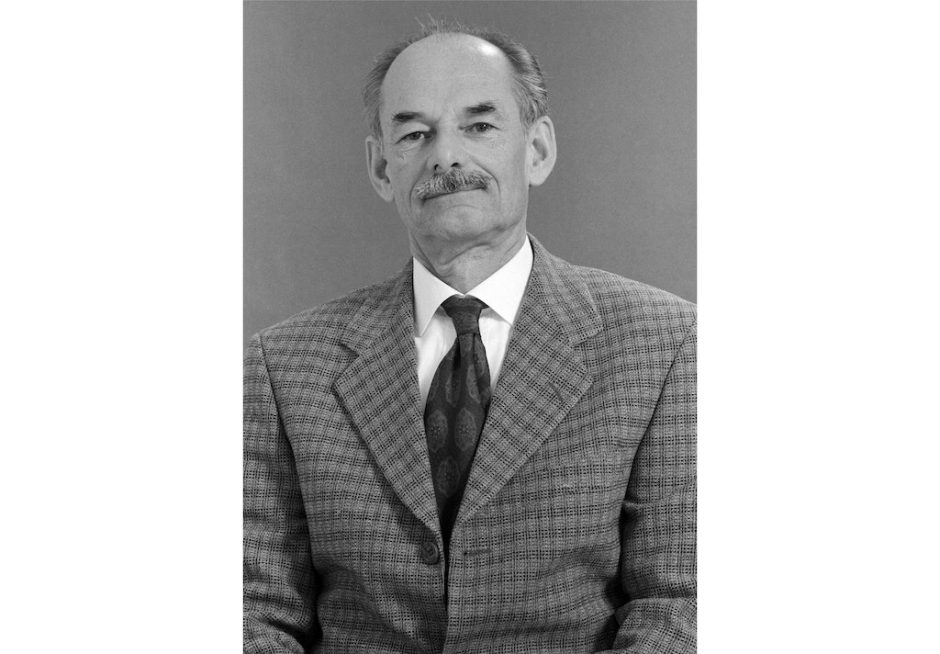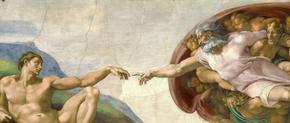The views expressed in our content reflect individual perspectives and do not represent the authoritative views of the Baha'i Faith.
The renowned Canadian Baha’i painter and artist Otto Donald Rogers attempted to define what characterizes a good painting in his stirring, insightful essay “The Artist and the Grammarian:”
Like a good piece of music, its presence is absolutely precise; it sings, it vibrates in just the right fashion because all of the parts are connected, and the “whole” or “significant form” is achieved. The philosophers of art equate this truth of form or “being at one with a greater reality” with the highest possible achievement for the artist as a mystic seeker.
The whole nature of pictorial art has to do with the creation of a reality suspended between the material and spiritual realms, with the sense of peace being the inner condition reflective of the attributes of the soul. … the Revelation of Baha’u’llah simply surrounds it, elevates it, and pushes it forward into the future. … The principles of compositional order that are sought in art can be experienced in the Sacred Writings, thus confirming the relationship of the arts to spiritual development.

RELATED: An Artist’s Manifesto: How Can Art Change Us?
Rogers’ own abstract paintings, because they explore the sacred spaces of mystical love and spiritual devotion, hover between the material and the spiritual realms in an atmosphere all their own, untethered from ordinary reality but governed by inner coherence, or form, within the borders of a canvas.
Rogers likened the sensibility of the artist to the Baha’i seeker, insofar as both have inspired minds, both are attracted to beauty, both seek forms with which to memorialize that beauty, and both, he says, can find their heart’s desire in the Baha’i revelation, as in this passage from Baha’u’llah, the prophet and founder of the Baha’i Faith:
In this [spiritual] journey the seeker becometh witness to a myriad changes and transformations, confluences and divergences. He beholdeth the wonders of Divinity in the mysteries of creation and discovereth the paths of guidance and the ways of his Lord. Such is the station reached by them that search after God, and such are the heights attained by those who hasten unto Him.
Rogers’ words, beautiful and instructive and redolent of imaginative fire, speak for themselves:
I want to … illustrate how my experience as an artist and as a Bahá’í has become an interwoven pattern. … [The Baha’i] Revelation impressed me as being all-embracing and of such aesthetic potency, and it also embodied the idea of order, which appealed so much to my mind and my soul. I experienced the Sacred Writings as also embodying the language of art, so I came to understand that art was necessary for the development of higher consciousness. I am not sure that this fact is as fully appreciated as it might be. For example, we think of art as a decorative thing, but not necessarily as a means of education, as a means of elevating consciousness.
… I came to understand that if you married poetry and order you would be in very good hands. Thus when I embraced my gift as an artist, it seemed quite logical because it consisted of striving for order and being poetically intoxicated.
While Rogers asks us to ponder the spiritual and artistic potency of the Baha’i revelation, he also wants all of us to think of ourselves “as being artists, because we are all engaged in a creative endeavor.”
In other words, it is all of a piece, of one revelatory Design to be enacted on one vast canvas, one inspired form into which all of us are invited to enter and to create.
In this way, in aligning ourselves with the Baha’i teachings, we take possession of ourselves as artists-in-the-making, even as new creations, new art forms ourselves, spiritually ordered and aesthetically beautiful. But we must do more to develop our spiritual imaginations, Rogers tells us, and take what he calls a leap into an unknown place, into a greater mind, a “going over the edge” and into vast spaces of the Baha’i spiritual imagination.
RELATED: Four Spiritual Qualities For Every Artist to Practice
Yes, the work of the Baha’i artist is challenging:
… it is a combination of order, preparation, and conscious knowledge. [But it] has to be imaginative … The poetic aspect of every endeavor is absolutely crucial to its success because without poetry there is no intoxication and we seem to like to be intoxicated, or we need to be. We’re designed to be “on fire.”
The poetry of the creative word “fires the imagination and quickens the mind.” The creative word, which crackles and burns beneath the prose of the revelation, moves us to enter the vast spaces of the Baha’i spiritual imagination, and inflames us with the courage to create.
Miller’s latest book is Sickness, Death, and Resurrection of Holden Caulfield, available on Amazon.

















Comments
Sign in or create an account
Continue with Facebookor